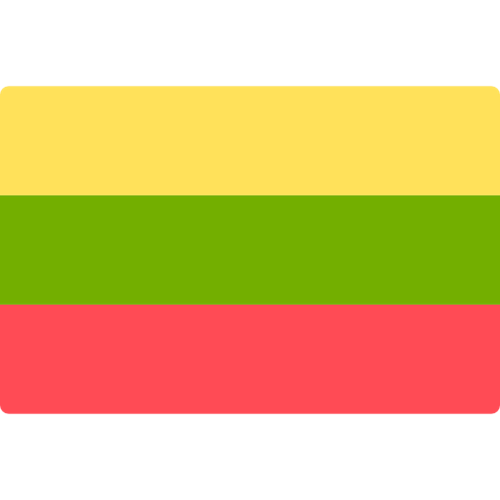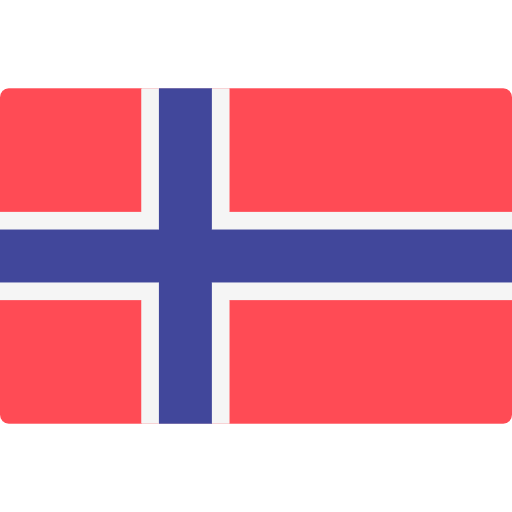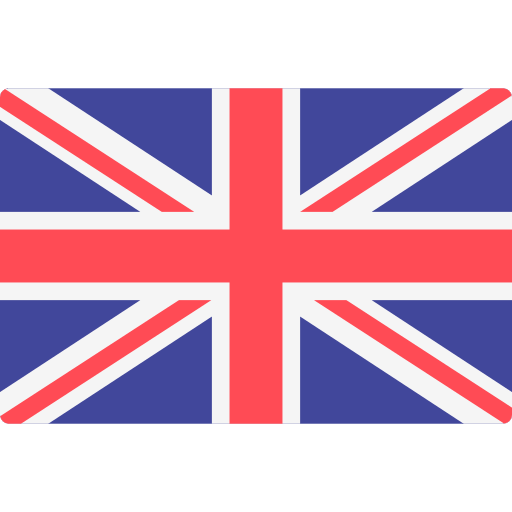Eurofins Toys & Hardlines Monthly Bulletin (August 2025)


Closer to a new framework for safer toys
In April 2025, the European Parliament and the Council reached a provisional agreement on the new EU toy safety rules, aimed at enhancing the protection of children’s health and development.
The aim is to update the safety requirements for toys and adapt to new challenges, including online sales and emerging health concerns such as endocrine disruptors, thereby ensuring high levels of child safety.
In June 2025, the EU Council approved the final draft version. The Parliament will have to endorse the text in plenary (document ST 10091 2025 INIT). The main changes are (non-exhaustive):
- The scope will apply to all toys marketed in the EU, regardless of origin, and include catapults and slings. It also lists products that are not considered toys, such as reading and educational books intended for children over 3 years and without play value, among others.
- New chemical safety requirements such as strengthening the generic ban on hazardous chemicals to include, besides CMR substances (carcinogenic, mutagenic, or toxic for reproduction), endocrine disruptors, respiratory and skin sensitisers, and organ toxicity substances. Prohibiting the presence of PFAS (Per- and Polyfluoroalkyl substances) and Bisphenols, within other new chemical requirements.
- Cybersecurity requirements for digital elements of the toy.
- Introduction of the Digital Product Passport.
- New responsibilities of economic operators.
This Regulation will repeal Directive 2009/48/EC (TSD) on the first day of the month following 54 months after its date of entry into force. Member States shall not impede the making available on the market of toys which were placed on the market in conformity with Directive 2009/48/EC more than 54 months after the date of entry into force of this Regulation.
EC type-examination certificates issued in accordance with Article 20 of Directive 2009/48/EC shall remain valid until the first day of the month following 60 months after the date of entry into force of this Regulation, unless they expire before that date.
For further information about this upcoming proposed Toy Safety Regulation, download our white paper ‘The future of toy safety in the EU: What businesses need to know about the proposed Toy Safety Regulation.'
New permitted use for cobalt in toys
On 9 July 2025, the draft Directive which amends Appendix A of Annexe II of the Toy Safety Directive, was published in the World Trade Organization.
Annexe II to Directive 2009/48/EC, the use of CMR substances of category 1A, 1B and 2 cannot be permitted if the substance is prohibited for use in consumer articles under Regulation (EC) No 1907/2006.
The European Commission proposes a new permitted use in three specified applications for cobalt, which is considered a carcinogenic, mutagenic or toxic for reproduction substance (CMR substance).
|
Substance |
Permitted use |
|
Cobalt (CMR 1B) |
|
For more information, please visit the World Trade Organization website here.
The table below summarises the most recent standard updates and upcoming dates of withdrawal (non-exhaustive):
(*) Date of withdrawal: The latest date by which national standards conflicting with a European Norm (EN) (and Harmonisation Document (HD) for the European Committee for Electrotechnical Standardisation (CENELEC)) must be withdrawn.
(**) Date of availability: The date when the definitive text in the official language versions of an approved CEN/CENELEC publication is distributed by the Central Secretariat.
|
The European Committee for Standardisation (CEN)/CENELEC |
|||
|
Reference |
Title |
Date of withdrawal (*) |
Supersedes |
|
Safety of toys - Part 2: Flammability |
30 June 2026 |
||
Publications on European Commission initiatives
The table below summarises recent publications on European Commission initiatives:
| Date | Title |
|
8 July 2025 |
This initiative will lay down common rules for calculating, verifying and reporting on recycled plastic content in single-use plastic beverage bottles. |
|
30 June 2025 |
Consumer rights – EU label on product durability and EU notice on legal guarantees for consumers The Commission will establish an:
The feedback period was closed on 28 July 2025. |
|
30 June 2025 |
Geographical indications for craft and industrial products – new legislation This legal act supplements Regulation (EU) 2023/2411. It specifies: · The requirements for documentation accompanying applications for a geographical indication; · What additional items to submit; · The direct registration procedure criteria; · The procedures and conditions for preparing and submitting applications to the EU Intellectual Property Office; · The content of notices of appeal and the procedure for submitting an appeal; · The content and form of the decisions of the Board of Appeal. The feedback period was closed on 28 July 2025. |
|
12 June 2025 |
Sustainable products – disclosure of information on unsold consumer products EU rules for sustainable products identify the destruction of unsold consumer products as an environmental problem. To discourage this practice, businesses (except for micro and small enterprises) are required to disclose information on unsold consumer products that they dispose of. This initiative will specify:
The feedback period was closed on 10 July 2025. |
Environmental and other requirements for consumer products in France
This summer 2025, the Ministry of the Economy, Finance, and Industrial and Digital Sovereignty published information about the new requirements and obligations that consumer products sold in France must comply with.
These requirements are indicated in AGEC Law, anti-waste law for a circular economy and the French environmental code.
The relevant publications related to:
- Environmental Claims
- Repairability Index for Your Electrical and Electronic Equipment Products
- Donating Your Unsold Non-Food Items
- Repair Bonus
France in the Court of Justice of the European Union by its labelling requirements for waste sorting
On 17 July 2025, the Commission decided to refer France to the Court of Justice of the European Union for failing to address the incompatibility of its labelling requirements concerning waste sorting instructions with the Treaty on the Functioning of the European Union.
The main points to do this action are:
- This National rule represent obstacles to the free movement of goods.
- The French requirements can be considered disproportionate. There are less restrictive alternatives available to inform consumers.
- This measure was not notified to the Commission at a draft stage, prior to adoption, according to the Single Market Transparency Directive (Directive (EU) 2015/1535).
For more information, consult the European Commission website here.
New proposals related to waste management
On 27 June 2025, the European Commission published several notifications related to waste management. The notifications are summarised in the table below:
|
Code |
Notification |
|
Government proposal to Parliament for an Act amending the Waste Act
|
|
|
Government proposal to Parliament for legislation supplementing the EU Batteries Regulation and implementing the amendment to the Waste Electrical and Electronic Equipment Directive
|
Amendment of the nation’s ordinance on FCMs and articles
On 1 July 2025, the Ordinance RO 2025 395 became effective. It amends the nation’s ordinance on FCMs and articles (RS/SR 817.023.21) and harmonises the following requirements with those in the EU. The main amendments are:
- Amends BPA requirements in Annexe 13
- New sub-section on bisphenols and bisphenol derivatives Annexe 13
- Revises information requirements for a Declaration of conformity for varnishes and coatings in Annexe 14.
For more information, please visit the official publication on the Swiss website (FR, IT or DE).
In 2023, the State of Minnesota passed HF 2310 (Chapter 60) to regulate intentionally added PFAS in various consumer product categories. On 14 June 2025, Minnesota passed SF 3, amending its PFAS law to clarify exemptions in product scope and application.
Key provisions of the original law (HF 2310)
- Phase I (effective 1 January 2025): Bans products with intentionally added PFAS in 11 specified categories, including:
- carpets/rugs
- cleaning products
- cookware
- cosmetics
- dental floss
- fabric treatments
- juvenile products
- menstruation products
- textile furnishings
- ski wax
- upholstered furniture
- Phase II (starting 1 January 2026): Requires manufacturer disclosure of PFAS use:
- Including names, CAS numbers, purposes, and amounts
- Phase III (effective 1 January 2032): Extends PFAS ban to all products, except those deemed a “currently unavoidable use” by rule; certain exemptions apply (e.g., FDA-regulated medical devices, firefighting foam, reused products)
Amendments under SF 3
- Expanded exemptions for Phase I (2025):
- "Intentionally added PFAS located only in electronic components or internal components" are now exempt from the 2025 ban, to be phased in later by 2032 if deemed avoidable or phased out.
- Juvenile product definition clarified to exclude children’s motor vehicles (e‑bikes, snowmobiles, ATVs) and their replacement parts.
Minnesota expands exemptions to state lead & cadmium ban
In 2023, the State of Minnesota originally enacted HF 2310 (Chapter 60), which banned the import, manufacture, sale, or distribution of the following 15 product categories containing lead over 90 ppm or cadmium over 75 ppm:
- Chalk, crayons, paints and other art supplies
- Clothing, footwear, headwear and accessories
- Cosmetics and personal care products
- Costumes, costume accessories and children’s and seasonal party supplies
- Craft supplies and jewellery-making supplies
- Cups, bowls and other food containers
- Fidget spinners
- Jewellery
- Keys, key chains and key rings
- Outdoor games
- Play sets and play structures
- Pots and pans
- Puzzles, board games, card games and similar games
- School supplies
- Toys
On 14 June 2025, Minnesota approved HF 4, introducing important exemptions to its lead and cadmium law, effective 15 June 2025.
Key newly exempted items
- Ink pens and mechanical pencils are no longer classified as “school supplies” under the statute.
- The term “paints” in the art supplies category is restricted to children’s paints only.
- Professional artist materials—such as oil-based and water-based paints, pastels, pigments, ceramic glazes, markers, and encaustics—are now excluded.
- Products containing lead only in internal solder are exempt until 1 July 2028, but manufacturers must submit biennial reports about alternatives and phase-out plans thereafter.
- Keys, key chains, and key rings with lead content are exempt if available before 1 July 2028. Even after that date, keys with at least 1.5% lead content remain permitted.
- Cast iron or steel pots and pans are exempt if lead is ≤90 ppm and cadmium is in the enamel, so long as the enamel does not come into contact with food.
Bans the import and export of several kinds of consumer goods containing mercury
On 16 June 2025, the Macau Printing Bureau announced a new local regulation, Chief Executive's Decision No. 109/2025. This regulation bans the import, export, and transshipment of specific products with Mercury (Hg) content to the Macao Special Administrative Region.
- The import, export and transit of the following mercury-added products covered by the Minamata Convention on Mercury and its amendments shall be prohibited:
-
- Batteries;
- Switches and relays;
- Compact fluorescent lamps (CFL) for general lighting;
- The following linear fluorescent lamps (LFL) and non-linear lamps for general lighting (e.g. U-shaped and circular):
- Match triband, all powers;
- Phosphorus halophosphates, all powers;
- High-pressure mercury vapour (HPMV) lamps for general lighting;
- Cold-cathode fluorescent lamps and external electrode fluorescent lamps (CCFL and EEFL) for electronics;
- Cosmetics, including soaps and creams to whiten the skin, excluding cosmetics for application to the eye area that use mercury as a preservative, where there are no effective and safe alternative preservatives;
- Pesticides, biocides and topical antiseptics;
- The following non-electronic measuring devices:
- Barometers;
- Hygrometers;
- Pressure gauges;
- Thermometers;
- Sphygmomanometers;
- Extensometers, to be used with plethysmographs;
- The following electrical and electronic measuring apparatus:
- Fusion pressure transducers;
- Fusion pressure transmitters;
- Fusion pressure sensors;
- Mercury vacuum pumps;
- Tire gauge and wheel weights;
- Film and photographic paper.
- The prohibition referred to in the preceding paragraph shall not apply to mercury-added products intended for use in research and instrument calibration or to serve as reference standards.
- This Order shall enter into force on 1 January 2026.
Below you will find a monthly summary of product recalls and alerts in Europe (Source: “Safety Gate (RAPEX)” and "European Commission Rapid Alert System for Food and Feed (RASFF)", the UK (Source: "OPSS") and the US (Source: “CPSC”).
Safety Gate (RAPEX) (European Commission Rapid Alert System for dangerous non-food products – Alerts reported by EU national authorities).
The following 31 alerts regarding toys, childcare articles, and children's equipment products were reported between week 24 and week 27 of 2025.
|
Type of Risk |
Number of Alerts |
Notes |
|
Burns, Chemical, Choking |
1 |
Toy bubble gun The battery compartment can be easily opened without the use of any tools, and the button cell batteries inside are easily accessible. In addition, the toy's rear protection can be easily removed, allowing the live parts to heat up if they are brought into contact with a metallic object and causing burns to the user. The product does not comply with the Toy Safety Directive or EN 62115. |
|
Chemicals |
4 |
Balloons The rubber of the balloons releases an excessive amount of nitrosamines and nitrosatable substances. The product does not comply with the Toy Safety Directive. |
|
1 |
Toy ring The plastic material of the product has an excessive concentration of diisobutyl phthalate (DIBP) and dibutyl phthalate (DBP). The product does not comply with the Toy Safety Directive or EN 71-3. |
|
|
1 |
Pencil case The black material of the pencil case contains an excessive amount of bis(2-ethylhexyl) phthalate (DEHP) and dibutyl phthalate (DBP). The product does not comply with the REACH Regulation. |
|
|
2 |
Plastic doll The plastic material of the product has an excessive concentration of bis(2-ethylhexyl) phthalate (DEHP) and dibutyl phthalate (DBP). The product does not comply with the REACH Regulation. |
|
|
3 |
Toy slime The migration of boron from the toy slime is too high. The product does not comply with the Toy Safety Directive or EN 71-3. |
|
|
Choking |
1 |
Battery-powered toy The toy has small parts (the wheels) that can easily detach. The product does not comply with the Toy Safety Directive or EN 71-1. |
|
1 |
Crib toy Small parts (metal bell and its elements) may easily detach from the toy. Moreover, the fibrous stuffing material is accessible due to the weakness of certain seams. The product does not comply with the Toy Safety Directive or EN 71-1. |
|
|
1 |
Folding seat The padding material can easily break, releasing small parts. Small children may put them in their mouths and choke. The product does not comply with the General Product Safety Regulation or EN 16120. |
|
|
2 |
Key ring with toy The toy has small parts (keychain) which may easily detach. The product does not comply with the Toy Safety Directive or EN 71-1. |
|
|
1 |
Pistol crossbow toy The product has small parts (the arrows' suction cups) which may easily detach. The product does not comply with the Toy Safety Directive or EN 71-1. |
|
|
1 |
Plastic ball The toy has a small part (squeaker element) that can easily detach. The product does not comply with the Toy Safety Directive or EN 71-1. |
|
|
1 |
Plastic toy The toy contains small parts (eyes) that can be easily detached. The product does not comply with the Toy Safety Directive or EN 71-1. |
|
|
1 |
Playmat The product has small parts (the eyes of the turtle, lion, fish, seahorse, penguin and horse) that can easily detach. The product does not comply with te Toy Safety Directive or EN 71-1. |
|
|
2 |
Soft toy Small parts can detach easily. The product does not comply with the Toy Safety Directive or EN 71-1. |
|
|
1 |
Toy military set The product has small parts that can easily detach (suction cups and projectiles). The product does not comply with the Toy Safety Directive and EN 71-1. |
|
|
1 |
Toy rattle The toy set contains small parts. The product does not comply with the Toy Safety Directive or EN 71-1. |
|
|
Choking, Cuts |
1 |
Plastic toy There are burrs on the toy's surface, which may cause cuts. Additionally, the product has small parts (green balls) that can be easily detached. The product does not comply with the Toy Safety Directive or EN 71-1. |
|
Entrapment, Suffocation |
1 |
Toy pillow The pillow, pillowcase and detachable moon toy include fabric loops sewn into the side of one of the seams. These loops are large enough for a small child to have a finger entrapped in them. Moreover, the plastic of the packaging is too thin. If a child plays with it, the plastic can cover the mouth and nose. The product does not comply with the requirements of the Toy Safety Directive. |
|
Injuries |
2 |
Children's bicycles The front handbrake may not work correctly because of its too-low mechanical strength. This could cause an accident. The handlebar stem can easily break due to low mechanical strength. The user can consequently lose control and fall. The product does not comply with the General Product Safety Regulation or EN 8098. |
|
Strangulation |
1 |
Children's nail set The plastic of the packaging is too thin. If a child plays with it, the plastic can cover the mouth and nose. The product does not comply with the Toy Safety Directive. |
|
1 |
Playmat The product has small parts (red piece- dog bangs and green piece - dog tongue) that can easily detach. The product does not comply with the Toy Safety Directive or EN 71-1. |
The following 5 alerts regarding jewellery were reported between week 24 and week 27 of 2025.
|
Type of Risk |
Number of alerts |
Notes |
|
Chemical |
1 |
Jewellery set The product has an excessive concentration of cadmium and nickel. The product does not comply with the REACH Regulation. |
|
1 |
DIY bracelet set The products have an excessive concentration of cadmium. The product does not comply with the REACH Regulation. |
|
|
1 |
Earrings The product has an excessive concentration of cadmium. The product does not comply with the REACH Regulation. |
|
|
1 |
Ring The product has an excessive concentration of nickel. The product does not comply with the REACH Regulation. |
|
|
1 |
Bracelet The rate of nickel release is too high. The product does not comply with the REACH Regulation. |
The following 1 alert regarding furniture was reported between week 24 and week 27 of 2025.
|
Type of Risk |
Number of alerts |
Notes |
|
Asphyxiation, Injuries, Strangulation, Suffocation |
1 |
Baby hammock The baby hammock's excessive tilt angle and curved lying surface may cause the child to roll over, become stuck, and suffocate or have their airways obstructed. The product also lacks a safe design, with inadequate side walls that may allow the child to roll out and fall, as well as potentially accessible cords that could lead to strangulation due to imprecise assembly instructions. The product does not comply with the General Safety Product Regulation or EN 1130. |
The following 3 alerts regarding miscellaneous consumer products were reported between week 24 and week 27 of 2025.
|
Type of Risk |
Number of alerts |
Notes |
|
Chemicals |
1 |
Keyring The stopper in the liquid's compartment can be easily opened, leaving the liquid accessible. Ingestion or aspiration of this liquid, due to its low viscosity combined with the high content of hydrocarbons in the mixture, may damage the lungs if it is swallowed and enters the airways. The product does not comply with the REACH regulation. |
|
Injuries |
1 |
Telescopic ladder The product may not hold the claimed weight without bending or collapsing. This can cause injuries to the user from falling from the full extended height of the product. The product does not comply with the General Product Safety Regulation. |
|
1 |
Step ladder Due to insufficient mechanical stability, strength and durability, the ladder may tip over during use, the platform may deform, or the platform may crack, which may result in injury to the user. The product does not comply with the General Product Safety Regulation, EN 131-1, or EN 131-2. |
RASFF (European Commission Rapid Alert System for Food and Feed - Alerts reported by EU national authorities)
The following 5 alerts regarding food contact materials related to children's tableware were reported from 21 June 2025 to 20 July 2025.
|
Product |
Notes |
|
|
100% melamine dish |
migration of melamine in dish is not correct |
|
|
|
high level of global migration in plastic products |
|
|
Melamine plastic soup plate |
Melamine migration in plastic soup plate |
|
|
Melamine bowl |
Migration of melamine in plastic bowl |
|
|
Melamine tableware |
Border Rejection of melamine tableware due to unsatisfactory documentation |
|
Office for Product Safety Standards (OPSS) issues Product Safety Alerts for the U.K. market.
The following 17 alerts regarding toys, childcare articles and children's equipment products were reported between week 24 and week 27 of 2025.
|
Type of Risk |
Number of alerts |
Notes |
|
Asphyxiation |
1 |
Water mat The plastic bag that accompanies it does not comply with the essential safety requirements. If left unattended, a young child could place the bag over their head and be unable to remove it. The product does not meet the Toys (Safety) Regulations 2011. |
|
3 |
Stroller The lack of warnings, instructions and safety information. Without access to this information, a parent or carer could place the baby in the product in an upright position. The product does not meet the General Product Safety Regulations 2005. |
|
|
chemical |
1 |
Balloons The product presents a serious chemical risk as it contains an excess of N-nitrosamines and N-nitrosatables. These compounds are considered toxic, and their use is restricted in products intended for use as toys. The product does not meet the Toy (Safety) Regulations 2011. |
|
Choking |
1 |
Kitchen toys A small bead may easily detach from the product. A young child may place this small part in their mouth. The product does not meet the Toys (Safety) Regulations 2011. |
|
1 |
Car/train sets (powered) The product presents a serious risk of choking as small parts may break off the car whilst it is in use. A young child may put the small part in their mouth and choke. The product does not meet the Toys (Safety) Regulations 2011. |
|
|
1 |
Bath book Due to a manufacturing fault in a specific product batch, the colour coating of the product can come away from the surface when immersed in water, causing flaking. The baby may place the flakes in their mouth and swallow them. The product does not meet the Toys (Safety) Regulations 2011. |
|
|
1 |
Water doodle mat The removable pen caps are a small part capable of fitting entirely inside a small parts cylinder. Pieces of the foam animals also detached during testing, creating further small parts. A young child may put these small parts in their mouth and choke. The product does not meet the Toys (Safety) Regulations 2011. |
|
|
1 |
Foam plane The button batteries are easily accessible. A child may access them, put them in their mouth and swallow them. Additionally, the product presents a risk of asphyxiation as it is supplied in transparent plastic packaging that does not meet the minimum thickness requirements. The product does not meet the Toys (Safety) Regulations 2011. |
|
|
1 |
Busy board The keys and (once released from the lock) padlock fit entirely inside a small parts cylinder. Both the steering wheel and light are battery-operated with no screw to secure the compartment. This means the batteries are easily accessible. Additionally, the rope at the top and cord used to secure the phone toy to the board both pose a strangulation hazard to a young child as they exceed the maximum 300mm length and can tangle. The product also requires improvements to documentation and markings. The product does not meet the Toys (Safety) Regulations 2011. |
|
|
1 |
Wooden toy It is supplied with plastic balls that fit fully inside a small parts cylinder. A young child may put them in their mouth and choke. Additionally, some of the required documentation and markings were not present. The product does not meet the Toys (Safety) Regulations 2011. |
|
|
Choking and injuries |
1 |
Light-up hair braid The battery compartment of the products is not secured by a screw, allowing easy access to the compartment and button cell batteries. The batteries may be placed in the mouth and swallowed by young children, and causing damage to the gastrointestinal tract. The product does not meet the Toys (Safety) Regulations 2011. |
|
health and choking |
1 |
Bath/Pool water toys It includes water beads that expand to more than 50% of their original size within 12 hours of soaking them in water. If the small, dehydrated beads are swallowed by a young child, the beads may expand inside the digestive tract, causing a blockage. The product does not meet the Toys (Safety) Regulations 2011. |
|
Injuries |
1 |
Balloon pumper There is no mechanism to prevent it from becoming over-pressurised. An over-pressurised container could shatter. The product does not meet the Toys (Safety) Regulations 2011. |
|
1 |
Magnetic chess game It contains small magnets with a magnetic flux index greater than the permitted level. Small, high-powered magnetic products can easily be swallowed and, when ingested, have the potential to cause serious internal injuries within the gastrointestinal tract. The product does not meet the Toys (Safety) Regulations 2011. |
|
|
1 |
Baby swing seat It is possible for the swing seat to overturn whilst in use. Should an infant user lean back or tilt in the seat without the harness affixed, they may fall out of the seat. The product does not meet the Toys (Safety) Regulations 2011. |
The following 1 alert regarding jewellery was reported between week 24 and week 27 of 2025.
|
Type of Risk |
Number of alerts |
Notes |
|
Chemicals |
1 |
Pendants The product presents a serious chemical risk as it was found to contain nickel at levels higher than the maximum permitted limit. The products do not meet the REACH Enforcement Regulations 2008. |
The following 14 alerts regarding miscellaneous consumer products were reported between week 24 and week 27 of 2025.
|
Type of Risk |
Number of alerts |
Notes |
|
Chemicals |
1 |
Watch The crown on the watch releases nickel at levels higher than the permitted limit. Nickel is a strong sensitiser and can cause allergic reactions if present in articles that come into direct and prolonged contact with the skin. The product does not meet the REACH Enforcement Regulations 2008. |
|
Choking |
1 |
Water bottle The product presents a risk of choking as the push/pull spout can become detached during use. The user may swallow the spout unexpectedly, blocking their airway. The product does not meet the General Product Safety Regulations 2005. |
|
Eentrapment and injuries |
1 |
Avalanche transceiver The product presents a risk of entrapment and injuries as the AAA batteries can be jarred or impacted out of alignment with the electrical contacts. If this occurs, the device may turn off unexpectedly, which could result in the user being trapped in an avalanche with no capacity to activate the transceiver for rescue. The product does not meet the General Product Safety Regulations 2005. |
|
Fire and injuries |
4 |
Cycles (powered) The charger has poor quality soldering, and the transformer does not meet the minimum requirements for creepage and clearance distances. The plug also does not meet the dimensional requirements of BS 1363 because the distance from the live pin to the outside edge is too small. If the product was left plugged in overnight, the charger and plug could overheat. The products do not meet the Supply of Machinery (Safety) Regulations 2008 or the Plugs & Sockets etc. (Safety) Regulations 1994. |
|
Injuries |
1 |
Swimming/Surfing/Diving sports equipment It is supplied with an attachable canopy. In windy conditions, the canopy could cause the product to lift from the water. The child could fall from the product and be injured by impact or by drowning in the water. The product does not meet the requirements of the General Product Safety Regulations 2005. |
|
1 |
Bicycles The aluminium shim may leave indentations on the fork steerer tube. Over time, these indentations could develop into cracks. This could cause the fork to fail during use. The products do not meet the General Product Safety Regulations 2005. |
|
|
1 |
Swim seat It is supplied with an attachable canopy. In windy conditions, the canopy could cause the product to lift from the water. The child could fall from the product. Additionally, swim seats should be manufactured in bright colours that contrast with the water surface to be visible at all times. Improvements are also required to the markings and warnings. The product does not meet the General Product Safety Regulations 2005. |
|
|
1 |
Telescopic ladders The product could not hold the claimed weight without bending or collapsing. If this were to occur when in use, it could cause the user serious injury from falling from the full extended height of the product. The product does not meet the General Product Safety Regulations 2005. |
|
|
1 |
Drinking tumbler The tumbler lid has pointed, plastic rabbit ears. The positioning of the pointed ears may result in the user receiving an eye injury when drinking from the tumbler. The product does not meet the General Product Safety Regulations 2005. |
|
|
1 |
Roller skates The packaging states that the weight limit is 50 kg more than the maximum permissible weight limit in the relevant standard (BS EN 13899). The product does not meet the Toys (Safety) Regulations 2011. |
|
|
1 |
Set of glasses The tumblers can break and fracture if pressure is applied to the glass from the inside. This is due to excess tension in the glass used. If the glass were to break whilst in use. The products do not meet the General Product Safety Regulations 2005. |
The following 1 alert regarding furniture was reported between week 24 and week 27 of 2025.
|
Type of Risk |
Number of alerts |
Notes |
|
Fire |
1 |
Floor cushion It does not meet fire safety requirements. This means there is a potential risk of a fire if the product is exposed to an ignition source. The product does not meet the Furniture and Furnishings (Fire) (Safety) Regulations 1988.
|
From 3 July 2025 to 24 July 2025, the CPSC (Consumer Product Safety Commission) published the following recalls:
7 recalls regarding toys and childcare products
|
Hazard |
Number of alerts |
Notes |
|
Ingestion |
3 |
Party supply toys The recalled party supply toys violate the mandatory standard for toys containing button cell batteries because the compartment that holds the batteries can be easily accessed and opened by children, posing a deadly ingestion hazard to children. When button cell or coin batteries are swallowed, the ingested batteries can cause serious injuries, internal chemical burns and death. |
|
Slap ruler bracelets The battery compartment of the recalled light-up ruler bracelets can be opened easily by children, allowing access to the button cell batteries, violating the battery-operated toys requirements under the mandatory standard for toys. If a child swallows a button cell or coin battery, it can cause serious injuries, internal chemical burns or death. |
||
|
LED gloves The recalled LED gloves violate the mandatory standard for toys containing coin batteries because the compartment that holds the batteries can be easily accessed and opened by children. Additionally, the spare coin batteries provided with the toys are not in child-resistant packaging and do not have the warnings required under Reese’s Law. When button cell or coin batteries are swallowed, the ingested batteries can cause serious injuries, internal chemical burns and death. |
||
|
Suffocation |
2 |
Crib bumpers The recalled padded cushioned crib bumpers violate the federal crib bumper ban because they can obstruct an infant’s breathing, posing a suffocation hazard. This creates an unsafe sleeping environment for infants. Padded crib bumpers are banned by the Safe Sleep for Babies Act. |
|
Entrapment and suffocation |
1 |
Play yard mattresses The aftermarket play yard mattresses violate the mandatory standard for crib mattresses, as the mattresses exceed thickness requirements and may not adequately fit certain play yards, posing a deadly entrapment hazard. Babies can suffocate in gaps between an undersized mattress or extra padding and the side walls of a product, especially when the infant’s face becomes trapped against the side and the mattress, preventing the infant from breathing. |
|
Phthalates |
1 |
Scented highlighters The scented highlighters, which resemble cups with straws, contain phthalates; a violation of the federal phthalates ban. Phthalates are toxic if ingested by young children and can cause adverse health effects. |
14 recalls of consumer products
|
Type of Risk |
Number of alerts |
Notes |
|
Head injury |
1 |
Helmets The recalled helmets fail to provide sufficient protection in the event of a crash, posing a risk of head injury. |
|
Laceration and injury |
1 |
Grinder flap discs The ceramic cloth abrasive flaps on the disc can detach while in use on a grinder, posing laceration and injury hazards. |
|
Entrapment |
2 |
Retractable safety gates The recalled gates violate the federal standard for expansion gates and expandable enclosures because a child’s torso can fit through the opening between the gate and the floor, posing a risk of serious injury or death due to entrapment hazard. |
|
Drain covers The recalled drain covers do not conform to the entrapment protection standards of the Virginia Graeme Baker Pool and Spa Safety Act (VGBA), posing an entrapment hazard to swimmers and bathers. |
||
|
Lead poisoning |
1 |
Children’s bicycles Multiple components of the children’s bicycles contain levels of lead that exceed the federal lead content ban, posing a lead poisoning hazard to children. In addition, the black paint on the bicycle pumps contains lead that exceeds the federal lead paint ban. Lead is toxic if ingested by young children and can cause adverse health issues. |
|
Fall |
2 |
Adult bicycles The fork steerer tube on the recalled bicycles can crack, break or separate during use, posing a fall hazard. |
|
Loading ramps The ramps cannot withstand the weight of equipment within the limits that are specified on the ramps and can bend or break while in use, posing a fall hazard. |
||
|
Tip-over and entrapment |
2 |
Dressers The recalled dressers are unstable if they are not anchored to the wall, posing serious tip-over and entrapment hazards that can result in injuries or death to children. The dressers violate the federal standard as required by the STURDY Act. |
|
Impact and laceration |
1 |
Water bottles The lid can forcefully eject, posing serious impact and laceration hazards, when a consumer attempts to open the capped bottles after food, carbonated beverages or perishable beverages, such as juice or milk, are stored inside over time. |
|
Ingestion |
1 |
Detachable covers The magnets on the inside cover can detach, posing an ingestion hazard to children. When high-powered magnets are swallowed, the ingested magnets can attract each other, or other metal objects, and become lodged in the digestive system. This can result in perforations, twisting and/or blockage of the intestines, infection, blood poisoning and death. |
|
Impact and temporarily impaired hearing |
1 |
Hoses The recalled hoses can burst, posing an impact hazard and a risk of temporarily impaired hearing. |
|
Drowning |
1 |
Swimming pools The compression strap that surrounds the outside of the pool legs may create a foothold, allowing a child access to the pool, posing a drowning risk. |
|
Overheating |
1 |
Electric recliners The USB module in the recliner arm can overheat and spark, posing an overheating hazard. |















































